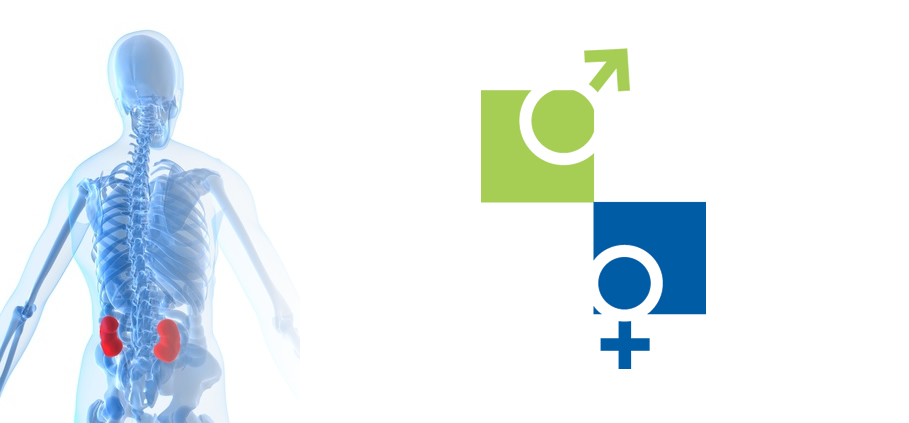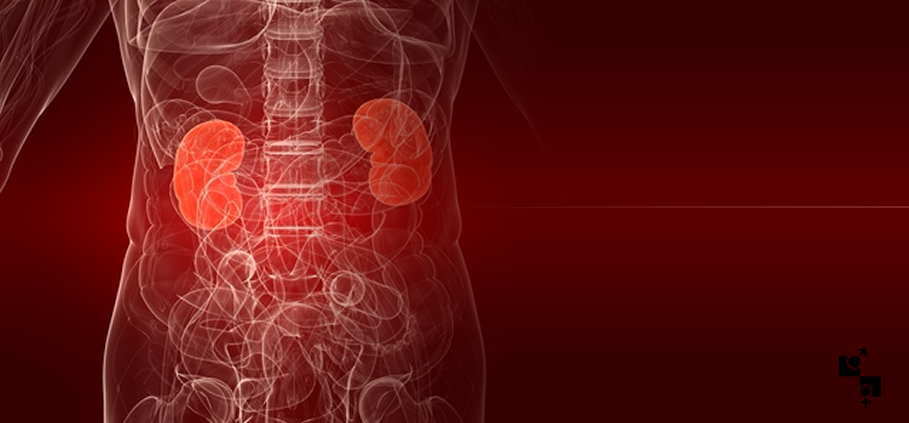Urinary System Lithiasis - Nutrition
-
The formation of stones in the urinary system is the third commonest condition after the urinary tract infection and the prostatic diseases. The urinary system stones occur to individuals regardless of sex or age, in any race or country and are known since antiquity. The most ancient urinary stone was found in the beginning of the twentieth century by the English archeologist Sir Grafton Elliott Smith, who dated it chronologically around 48000 B.C. This stone was found among the pelvic bones of a young male, in a predynastic era tomb, in El Amrah of Upper Egypt. Despite the fact that the lithiasis of the urinary system has been known since antiquity, the main research for its pathogeny started approximately 35 years ago and is due to the increase of occurrences which reaches 1-4% of the population and concerns mainly males of 35-55 years of age.
-
The majority of stones are formed in the kidneys from where they migrate to the ureters, the bladder and the urethra, according to their size and the general condition of the urinary tract. -
The urinary tract lithiasis is divided in four categories: -
-
-Nephrolithiasis (Kidney Stone)
video video2
- -Ureter Lithiasis video video2
- -Urinary Bladder Lithiasis
- -Urethra Lithiasis
As nephrolithiasis is defined the presence of stones in the upper urinary tract. The stones are formed by the crystals that normally exist in the urine. The stone may be found in a calyx of the kidney, in the pelvis of the kidney or it may take up space in the pelvis and the calyx (staghorn calculi). When found in a calyx it usually is asymptomatic. When located in the pelvis it obstructs the exit of urine from the kidney to the ureter having as a result the retention of urine under pressure within the kidney. This situation (increase of the internal kidney pressure) is expressed by renal colic. The renal colic is an intense and insufferable pain in the area of the kidney, which does not recede with the help of any painkiller and is accompanied by meteorism, nausea and sometimes vomiting. Treatment can be conservative (pharmaceutical) or surgical, and depends on the formation, size, weight and composition of each stone and the damaged caused to the kidney.
-
There are cases in which the stone cannot proceed within the ureter and gets stuck at a narrow point of the ureter, without then it being possible to be forwarded further (lithiasis of the ureter). In this case, i.e. when the obstruction of urine is at the level of the ureter, the ureter participates in the colic and, apart from the aforementioned renal colic, there is also pain along the ureter reflecting most of the time on the genital organs as well, especially on the corresponding testicle. When the stone is quite close to the bladder a continuous torturing feeling of desire to urinate is added to the above symptoms. -
The urinary bladder stones may be “non bladder-origin”, i.e. stones that might have fallen into the bladder from the kidney and for various reasons they couldn’t be aborted but remained in the bladder, or “endogenous” stones which have been formed locally as a consequence of urine retention within the bladder. Due to the existence of the foreign body (stone) within the bladder, there are irritating symptoms in the bladder, such as frequent urination, burning sensation when urinating or haematuria. When the stone goes towards the exit of urine (internal mouth of urethra) the urination may be interrupted. Treatment is interventive, or can be surgical in case of a very large stone. -
In case of urethral lithiasis, the stones are usually calculi formed in the upper urinary tract which have been stuck in the urethra. In this case urination is almost impossible due to the obstruction of the urethra and this leads to grave retention of urine, which is an extremely torturing condition and requires urgent treatment. If the stone is developed in a urethral diverticulum, treatment must be surgical (removal of the diverticulum). -
Depending on the chemical composition of the stones they are classified in the following types in order of frequency of incidence:- 1.Oxalic calcium stones 30-35%
- 2.Phosphate calcium stones 5-10%
- 3.Mixed (oxalic and phosphate Ca) 35-40%
- 4.Magnesium Ammonium phosphate stones 10-15%
- 5.Uric Acid stones 8-10%
- 6.Cystine stones 2-3%
Knowledge of the chemical composition of the stones is of great importance in treating them, but also in the prevention of each case.
The treatment of urolithiasis, depending on the case and its type may be: -
- >Conservative-pharmaceutical: The conservative-pharmaceutical therapy may be applied to the infected stones, to uric stones and to cystine stones, which altogether represent ¼ of lithiasis cases. The rest of the types of stones must also be treated conservatively when they do not cause obstruction, do not cause frequent and intense colics and their size is such that offers hope for automatic abortion.
- >Extracorporeal lithotripsy (ESWL): The Extriacorporeal lithotripsy has been a truly revolutionary method in the treatment of urolithiasis and has replaced the surgical treatment by 95% of stones of the upper urinary tract (kidneys-ureters) having extraordinary results.
- >Percutaneous Lithotripsy (PCNL): Its use has been limited only to large kidney stones in combination with ESWL.
- >Endoscopic (URS): Concerns mainly urinary bladder stones which could not be disintegrated with extracorporeal lithotripsy.
- >Surgical: the surgical treatment has been limited today to less than 5% of the cases, when all the previous methods failed to provide a solution.
The lithiasis rates vary among the various geographical zones. This is due to the difference in the climate conditions and the levels of various minerals and substances (e.g. calcium, magnesium) in the water. In very hot climates, and due to great amount of perspiration, urine is denser, which results in the increased formation of stones. This, however, is in contrast to the fact that black people very seldom suffer from nephrolithiasis, although they live in warm climates. The irregular lifestyle and the reduction of physical activity, heredity (for example, formation of cystine stones is definitely a hereditary genetic anomaly), as well as a great number of accompanying diseases may be the cause of stone formation. Nutrition (consumption of animal leucoma and fat), vitamine A deficit and increased production of vitamine D, as well as the insufficient fluid intake are among the main factors for the manifestation of the condition. It is worth noting that the frequency of lithiasis occurrence had a continuous increase during the 20th century, except in the years of the 1st and the 2nd World Wars, a fact that was attributed to the changes in people’s diet and the reduction of animal leucomas consumption during the two wars.
-
There has been a lot of debate concerning the nutrition habits in relation to lithiasis, especially the large consumption of foods which contain too much calcium, such as dairy products, as well as those foods and fluids rich in oxalic acid, industrial sugars, purines, fat, animal proteins, as well as the low intake of fibres or B6 vitamine. It must be clarified, however, that the patient’s diet should be dictated by and attuned to the composition of the stones.
-
However, there are some general rules and measures that could and should apply for the prevention of all lithiases, regardless of their etiology. The most important is the high fluid intake, especially of water, which ensures the elimination of urine of over 2 litres daily. This means, that depending on the climatological conditions, a patient with disposition for lithiasis must consume at least 3 litres of water daily. Another measure is the restriction of foods which contain too much calcium, especially dairy products, as well as those foods and fluids rich in oxalic acid, such as certain vegetables, cacao, chocolates, tea, etc.
-
-
To sum up, individuals with lithiasis predisposition should avoid large consumption of foods and beverages such as:- -Animal leucomas (meat, fish, eggs)
- -Foods rich in natrium/sodium (salt)
- -Foods rich in potassium
- -Foods rich in calcium (dairy products)
- -Foods rich in oxalics (beetroot, spinach, strawberries, cereal etc.)
- -Beverages rich in oxalic acid (cocoa, tea, chocolate, coffee etc.)
- -Carbonated drinks – Alcohol (beer, wine etc.)
-
Nephrolithiasis is a multifactoral disorder, but in our days it is possible to be faced with various methods and high success rates. The measures that must be taken and the treatment that will be adopted vary from case to case, must be decided by the doctor and be applied according to his/her directions.




